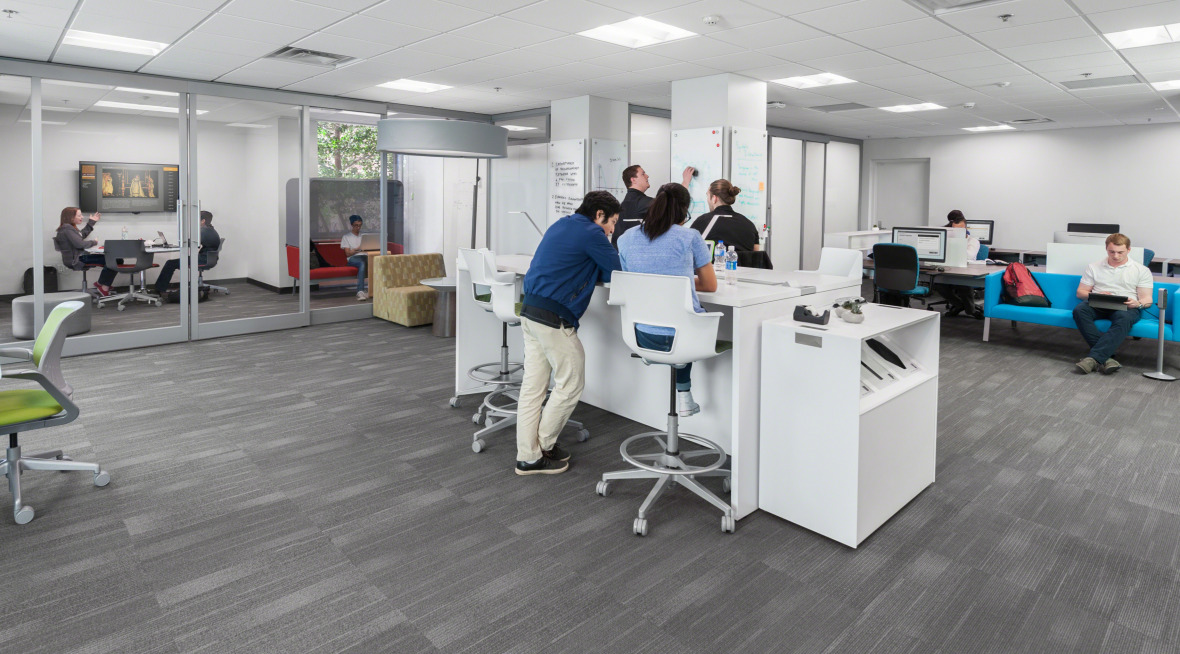We use cookies to maximize your online experience with us. By closing this window, you consent to our cookie policy. You can change your cookie settings in your browser any time. For more information, please see our Privacy Policy located on the footer of this site.
From Traditional School Library to Learning Commons: Why This Evolution Is Necessary for Today’s Students

As technology advances have made access to information immediate through the internet and range of devices we use daily, educators need to rethink the purpose of school libraries in the learning process. Symbolizing a silent archive of recorded knowledge, libraries need to become more innovative if we want them to support the expectations for today’s students and educators. Get ready for the next evolution of the library, known as the learning commons.
Learning commons consist of flexible spaces that support technology, communication, and collaboration to connect learners and help them construct knowledge. Remember tiptoeing through a maze of book stacks and large tables to find a book that was likely outdated by at least a decade? Thanks to the internet, the most current information can be found on the phone in your pocket and is no longer confined to only print materials. By weeding out the print materials so only the items still being circulated remain, stacks can either be removed entirely or a small number relocated around the room’s perimeter. This space optimization dramatically opens up the floorplan to begin adding active learning tools.
Because the learning commons is meant to accommodate a variety of learning activities, the key is to keep it flexible. Mobile furniture allows educators and students to adapt to different group sizes and modes of learning, including lecture, discussion, group, and individual. Lounge or study areas within the learning commons should emphasize comfort and provide different posture options to match a student’s study and learning needs. Placement of these furnishings should also remain flexible to give students control between making social connections and performing individual study.
Technology, which has become intertwined in how students learn and work today, should be integrated into all areas of the learning commons to aid in collaboration and co-creation. Collaboration technology featuring large displays enable the sharing of digital content and encourage student engagement by enabling them to explore, play, and immerse themselves deeper into unfamiliar topics. Presentations, once static and delivered as a lecture, can become interactive experiences that increase understanding and knowledge through active participation. Of course, we can’t forget about how to keep all these tools powered. Innovative Power distribution systems provide easy access to electricity throughout the learning commons so displays are not bound to walls and both students and educators can charge their mobile devices.
When a large, open space doesn’t allow for multiple classes or activities to take place concurrently, modular walls can help further define use and purpose. The smaller, acoustically private spaces can be used by educators to instruct students and provide additional focus. Unlike spaces created through traditional, dry wall construction, modular walls are easier to adapt to changes in technology and can be designed with glass walls to provide visibility throughout the learning commons. Continuing in the theme of flexibility, modular walls can also be reconfigured at a later time to adapt to the school’s evolving needs.
Today’s learning environments must cultivate student engagement by giving them a space that encourages active learning and collaboration. The days of the traditional library are over as we become more interconnected with technology in our daily lives. There is a demand to provide current and future students with easy access to information and learning resources that accommodate different learning styles – which ultimately lead to better educational outcomes. Through a carefully thought-out and executed integration of modular walls, furniture, and technology, the learning commons can be an effective learning environment that not only educates students in the present, but also instills a lasting desire to learn.
Click on a post below to learn more about recent trends in education:
- Top Education Trends You’ll See in 2018
- Active Learning Spaces Impact Student Engagement
- 8 Ways Technology Can Improve Education
- Creating the Right Space Improves Student Performance
